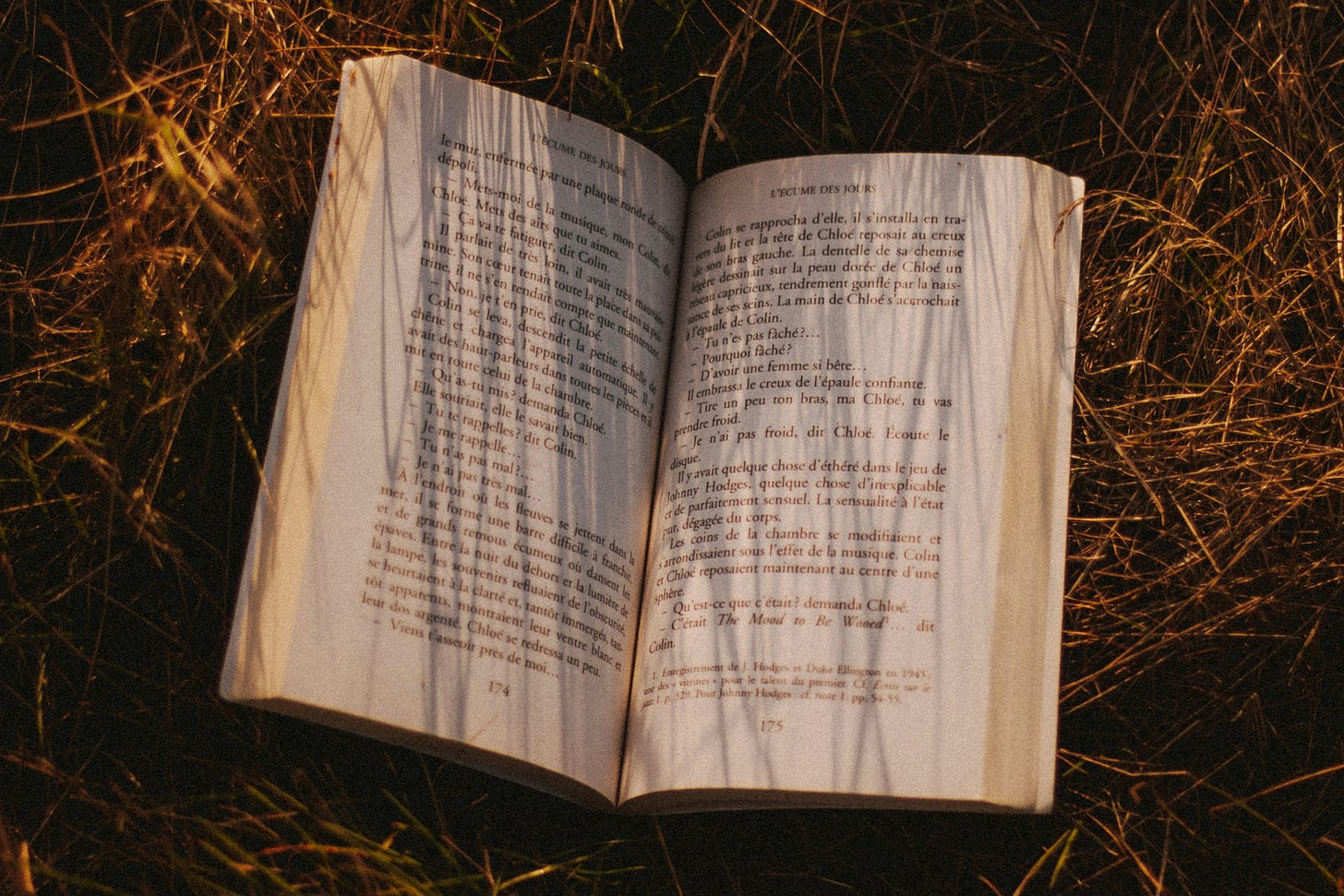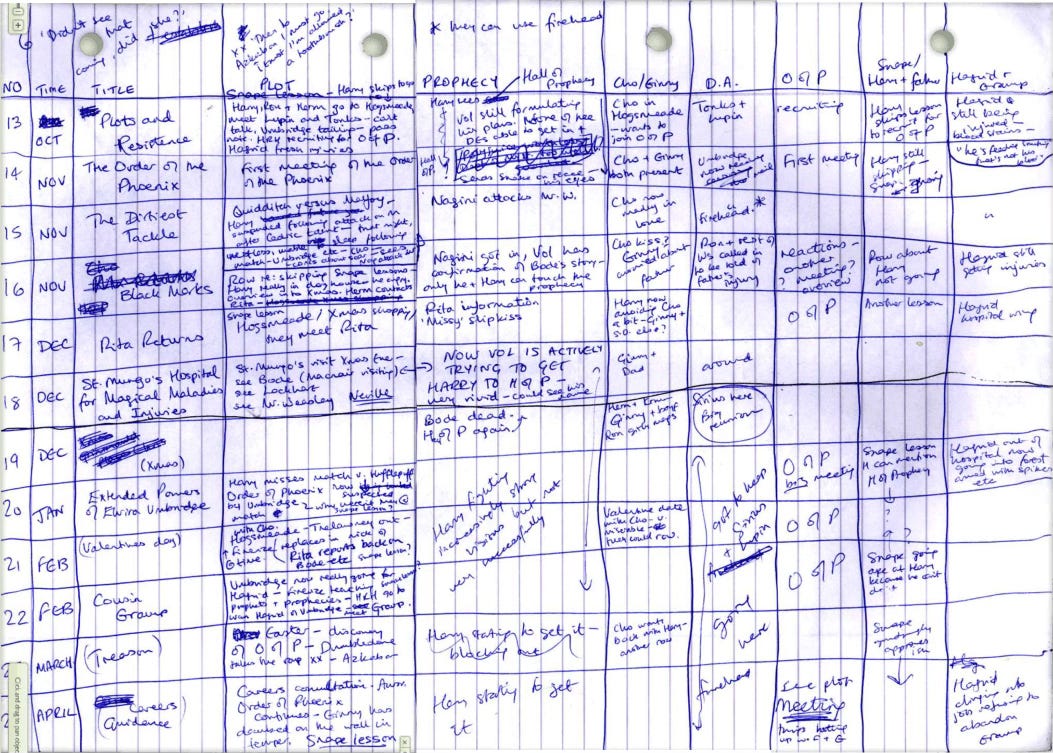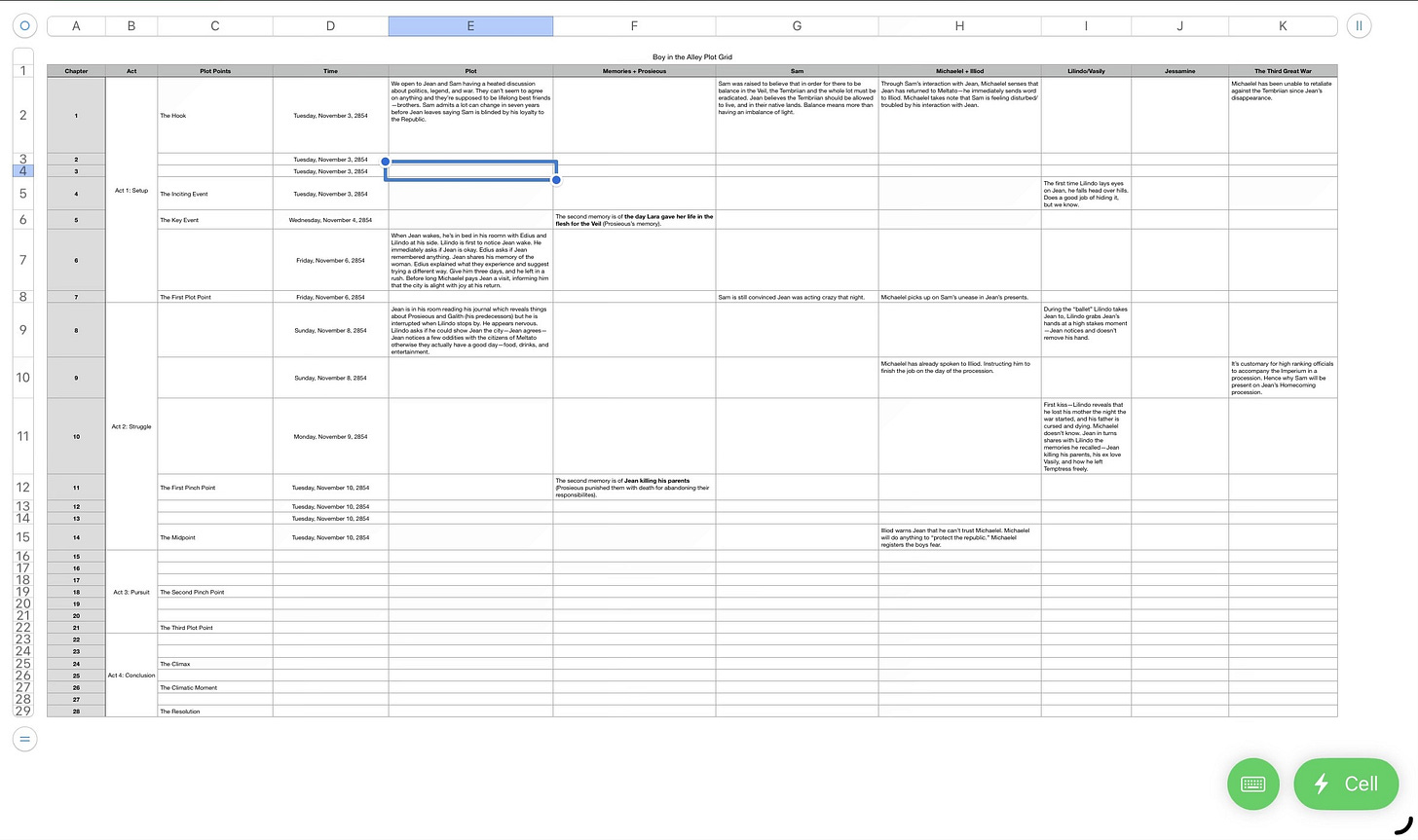What Plot Grids Taught Me About The Chess Game Of Life

Ever wish there was a guidebook to life you could pull out whenever you felt lost?
There are very few books that can be considered the guidebook we seek. One such book is Jordan B. Peterson’s 12 Rules for Life: An Antidote to Chaos. This particular book changed my life. It gave me the guidance I sorely needed at the time.
But it was the thing that changed the way I approached the game of life.
The reason some people always seem to be 3 steps ahead.
But what is a plot grid? What is it used for? And how can it help you play the chess game of life?
What is a plot grid, and what is it used for?
I initially came across plot grids while searching for new ways to outline my novel.
After writing by the seat of my pants and letting the story unfold, I grew dissatisfied with the outcome. Yes, I finished many drafts this way, but the result was always something that felt disjointed, out of sync, and not good, even for a draft.
So I needed another solution.
I tried a basic bulleted list of events and plot points, which helped some.
But it still wasn't enough.
Stories are three-dimensional. There’s not just one plot line going, only one character we’re focused on, or one setting we experience. There are countless elements at play when it comes to planning out a novel.
Enter the plot grid.
I’ll be honest with you. The primary reason I decided to use the plot grid to outline my novel this time around is that J.K. Rowling also used the plot grid to outline parts of the Harry Potter series. She’s the reason I’m a writer today, so I tend to be a bit biased when it comes to her and her craft.
The second reason why I love the plot grid is that it allows me to see the three-dimensional story I’m trying to write in the end from a bird's-eye view.
Essentially, a plot grid is a spreadsheet. The first couple of columns will list items such as chapter numbers and titles, titles for key plot moments, dates, the main plot, and the subplots, filling the remaining columns.
Here’s a stripped-down version of my plot grid for the novel I’m writing--can’t give away the plot:
In each cell, you'll write a summary of significant points--first, the main plot, and then any number of subplots. When completed, you'll have your entire novel mapped out in enough detail that it will be a breeze to write a substantive first draft that will be easier to edit.
And how can it help you play the chess game of life?
I might be reaching here, but hear me out.
Plotting a novel is like plotting someone else's life. It's plotting several characters' lives over a given period. Now, what would happen if the writer turned this in on themselves?
Of course, I'm not suggesting you take the plot grid and use it to plan out your life. No, that would be weird.
What I am saying is that the plot grid has taught me to think more carefully about how I want my life to unfold. The goals I reach for, the people I invite into my life, and the quests I go on for joy and purpose.
Usually, when someone I know asks me what's going on, I typically respond with, "Just taking it one day at a time."
For a long time, up until recently, that was true.
Sure, there were things I wanted to do, dreams I'd like to pursue. However, I never put them on a timeline. I never thought to myself, before recently, that there are little things I can do now that will benefit me in the future.
Such as taking the time to outline my novel before writing it, having dates in mind, and targets to hit in the process. Or how I'm jumping back into the basics of songwriting, producing, and sound design. Although I don't know when my novel will be published, since I want to publish it traditionally, I still have to write it.
I also don't plan on releasing any music until 2026 at the earliest, but I can still get in some reps to really make what I have planned memorable and meaningful.
The plot grid has taught me that the people who are often three steps ahead are literally three steps ahead because they planned it out that way.
Now, I'm not saying that people who plan are capable of seeing the future and making it real, but it is sometimes like that when you're in tune with the universe. From the outside, it looks like you're three steps ahead with a magic crystal ball.
In reality, that person has planned for the good, the bad, and the ugly, expecting only the good and the occasional bad.
They've taken the time to write out their dreams and aspirations.
They've made a plan to get from point A to point B, which will evolve as they acquire more information and correct course.
What I'm trying to say is plan for the future: set dates and timelines, and execute as much as you can when you can. Put in the work, even if it's singular and straightforward.
Time doesn't wait, and it's slipping away.
How long will you wait before mapping out the next five or ten years and determining what you can do now to achieve your desired outcome within that timeframe?
I'm not sure about you, but I'm feeling optimistic about the future for the first time in a long time.
I see what is possible, and I reach for it most days.
But that's it for today's newsletter.
See you Friday, where we'll dive into the music.





There’s something powerful about realizing life is more like chess than we think. Not every move needs to be bold but it does need to be deliberate. This newsletter helped me look at the chess board of life differently. I never thought of using a storytelling structure to rethink my own life moves. A very interesting read today Idris Elijah!
This really resonated with me. As a mom juggling work, parenting and lots of side dreams, I’ve often felt like I’m just reacting to whatever move life throws at me. I see now that I can be a player, not just a piece on a chess board. Even finding 20 quiet minutes a day is a small but intentional step that moves me closer to the life I want to create for me and my daughter. And music is a big part of our home too so hearing about your process with both writing and sound makes it even more inspiring. Thank you Idris Elijah!!